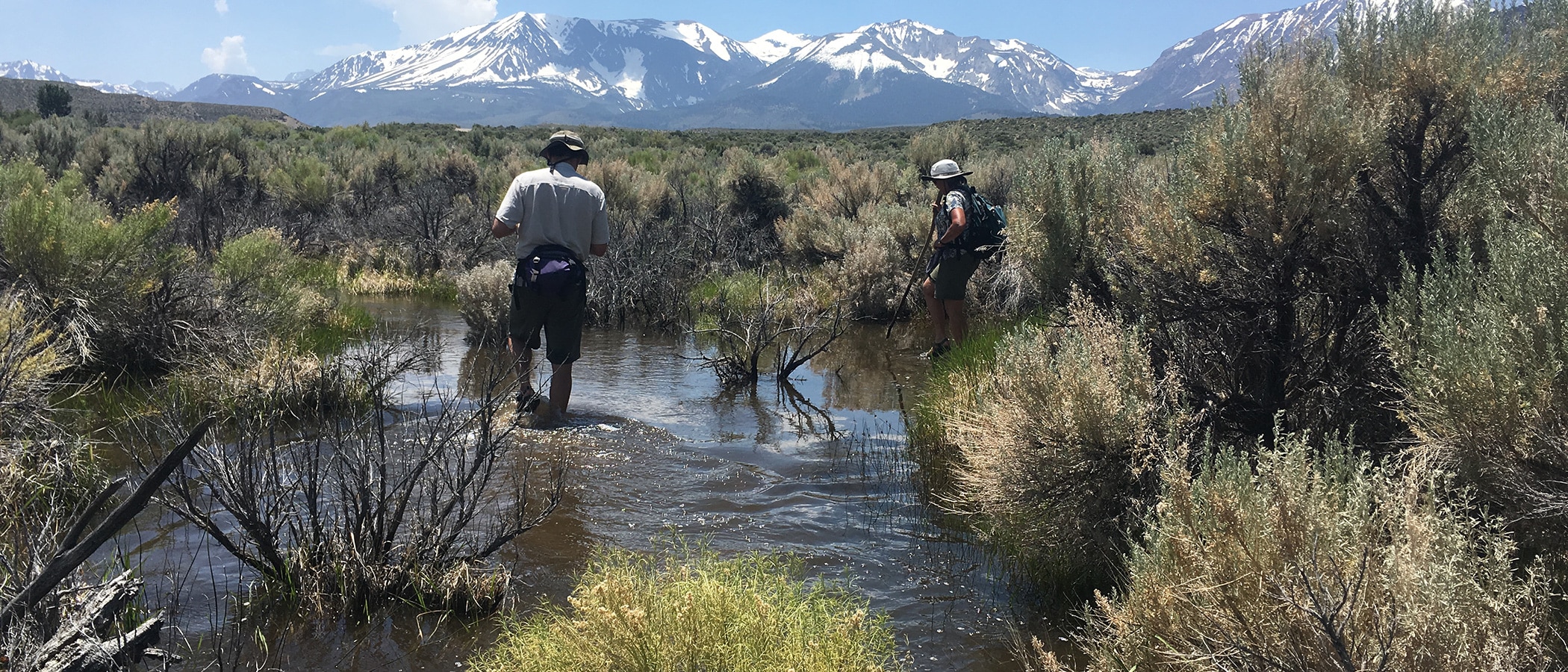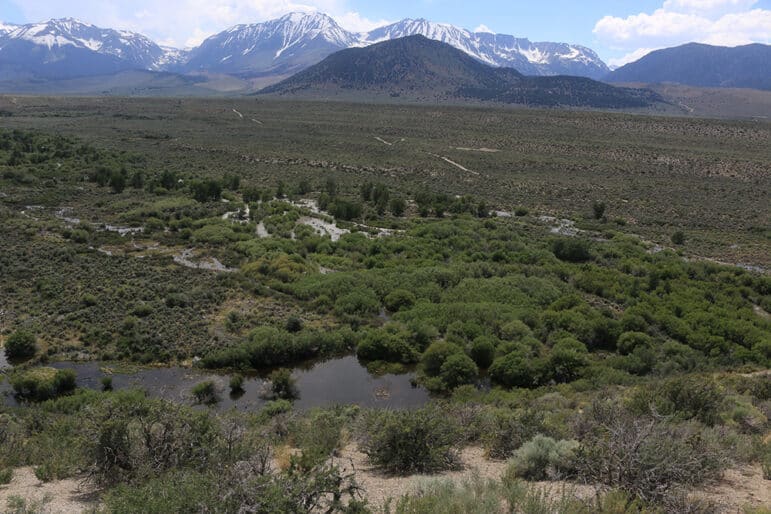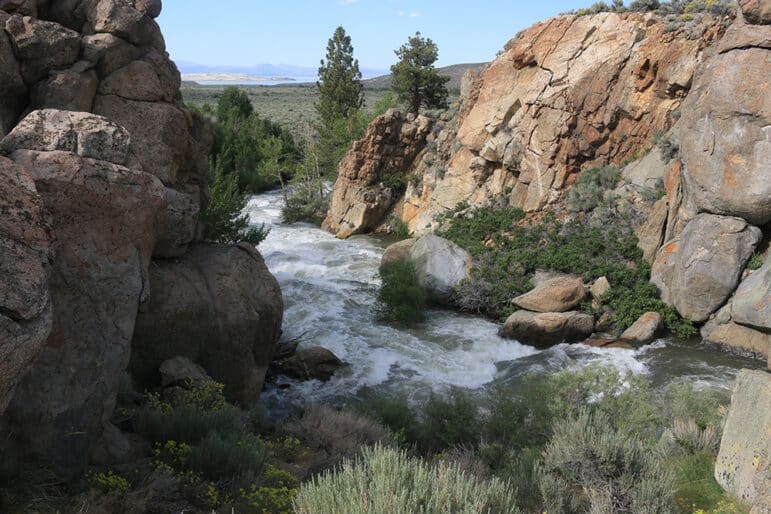
Exceptional runoff offers exceptional restoration opportunities
The seasonal runoff (April through September) in the Mono Basin this year is forecasted to be 243% of the long-term (1971–2020) mean runoff, which will make it the single wettest seasonal runoff period in more than a century. While this impressive percentage provides us with a general sense of what kind of runoff will occur this year, the stream restoration benefits associated with an exceptionally wet runoff year are best understood in terms of three factors: magnitude, timing, and frequency.

Larger flows restore more
Runoff magnitude is perhaps the most exciting consideration in a wet year like this. When I look at a hydrograph (streamflow over time), say during one of the Los Angeles Department of Water & Power’s (DWP) planning meetings, my eyes can’t help but jump to the highest point of the graph to examine how big the peak flow will be. While DWP’s presentations often discuss the logistical challenges of operating their outdated water conveyance infrastructure, I’ve found my attention swept away by daydreams of 1,000 cubic feet per second (cfs) of water spreading across Rush Creek’s floodplains and through braided channels, with stream banks armored by willows, black cottonwoods, and Jeffrey pines. What large trees might fall into the creek? What kind of log jams will form, creating fish habitat and stream complexity? What new channels, pools, and delta habitat will establish after such a large flow recedes? Bottom line, large-magnitude flows are destined for Mono Lake, which will bring tremendous stream restoration potential.
Timing is everything
Runoff magnitudes indicate what restoration processes will occur, but runoff timing affects how those magnitudes will be enhanced or diminished, and their duration. DWP’s current runoff forecast predicts a peak flow of more than 930 cfs occurring in the Rush Creek bottomlands near the end of June, but temperatures will ultimately determine when and how quickly the snow will melt, which in turn will dictate runoff magnitudes. In this way, runoff timing plays a critical role in what kinds of flow magnitudes will occur—before, during, and after the peak runoff period. As Greg Reis explains in Streamwatch, “there is a chance that the minimum required peak flow of 750 cfs could be reached, however, an early peak could be captured by [Grant Lake] reservoir and a cool summer could result in a lower peak but extend high flows well into August.” Critically, ecological processes such as willow seed dispersal or trout spawning rely on a “natural” timing of runoff. It’s for this reason that DWP is required to mimic the natural runoff timing, defined in their license as Stream Ecosystem Flows (long advocated for by the Committee), which help enhance specific restoration outcomes.

Few and far between
Runoff frequency is critical for understanding in part why these extreme wet years are so important to the stream restoration process. Using Rush Creek again as the example, streamflow of approximately 875 cfs is considered a ten-year flood for the Rush Creek bottomlands. But it only requires a modest increase in flow from this volume in order to reach 1,000 cfs, a 20-year flood. The exact timing of when the snow melts and the magnitude of flow it creates can therefore turn the same amount of snowpack into a ten- or 20-year flood. One of the stream processes that can only happen in extremely wet years like this year is channel avulsion, where flows overcome existing channel berms and can establish new channels. And it’s only with these episodic events that the streams have the opportunity to spread water to previously arid stream reaches, raise the water table, and promote stream and meadow habitat recruitment and restoration.
Gauging restoration opportunities
We may not know exactly how large the peak flow will be this year, we may not know exactly the timing of runoff, and we don’t know when a year like this will happen again, but understanding these variables is critical for understanding stream restoration opportunities. DWP’s obligation to deliver Stream Ecosystem Flows that mimic natural runoff patterns is critical for achieving restoration goals. That’s why the Mono Lake Committee diligently tracks the progress of runoff leading up to, during, and following each seasonal runoff period and seeks to facilitate information sharing between DWP, the Stream Monitoring Directors, and partnering conservation parties. One thing is for sure—this is a rare and exciting year for restoration on Mono Lake’s tributary streams.
This post was also published as an article in the Summer 2023 Mono Lake Newsletter. Top photo by Robbie Di Paolo.
